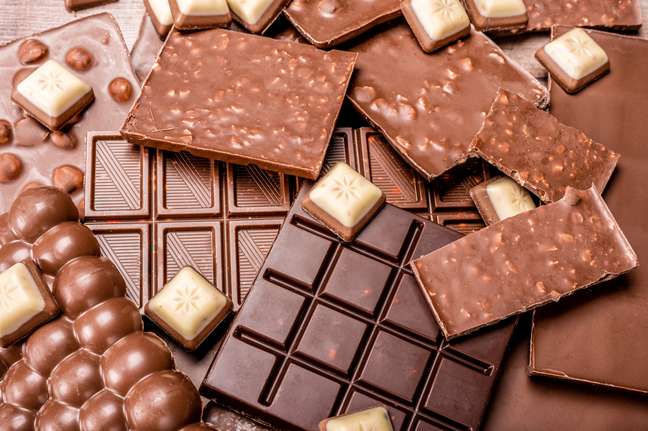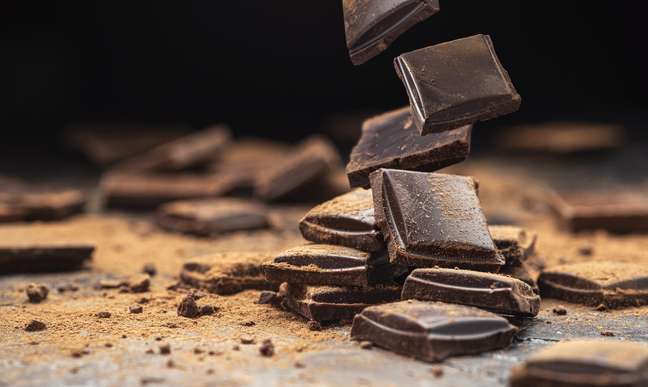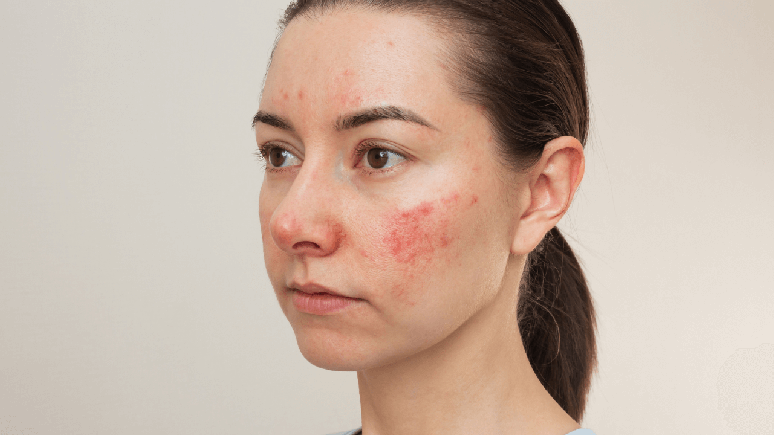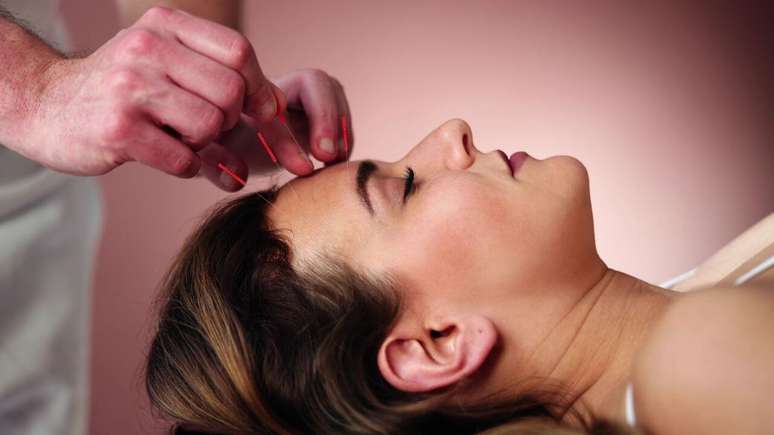‘Paladar’ blindly tasted nine samples in the milk version, to evaluate them in terms of appearance, aroma, flavor and texture; check the ranking
the life of chocolaty it is not easy – and the proof of this are the posts that, turn and move, pop up on social networks with consumer criticism. “All national chocolate tasted like an umbrella,” one Twitter user complained a lot. “But with the price of imported chocolate,” retorted one follower, and so on.

Keeping an eye on this din, the taste promoted to blind tasting to analyze the quality of industrialized chocolates. Just for proof milk chocolate bars, domestic and imported, which can be found on the shelves of four supermarkets. The options filled, crunchy or with other complements, for reasons of standardization, have been left aside.
The samples (all uncharacterized) were evaluated for visual appearance, aroma, texture and flavor. And the jury called to carry out this task was composed of Ana Lourençojournalist and openly chocolaty; Arnor Portopastry chef and teacher at the Chocolate Academy; Bertrand Busquettechnical consultant for Barry Callebaut in Brazil; Gislaine Gallette, chocolatier and partner of Gallette Chocolates; And Patrizia Landmannmarketing manager at Chocolat du Jour.
‘Vanishing Chocolate’
The sour joke (or would it be bitter?), Which plays a pun on the so-called Swiss chocolate – famous for its flavor and creaminess -, comes from another comment collected by social media. The “grace” lies in the assumption that the national chocolate it has less and less cocoa mass in the composition, at the expense of other ingredients, such as sugar (a lot of sugar!), fat (which is not always cocoa butter) and artificial flavors (used to even out and hide defects). A fact that was perceived, sensorially, by the judges during the tasting (see below). All this, in addition to the poor quality of the raw material, in particular that of cocoa, to further reduce costs.
According to Anvisa, to be considered chocolate, the product must have at least 25% cocoa in the recipe, or it must be classified as chocolate milk – something completely different from 40% of cocoa content that classify a very fine chocolate. Sought after by the report, the Brazilian association of the chocolate, peanut and candy industrys (Abicab), which represents 92% of the chocolate market in Brazil, reiterates “that the quality of chocolate is not proportional to the total quantity of cocoa and that the industry has a broad portfolio and supplies products with different percentages of cocoa to meet the various consumer profiles “.
The judges, however, seem to disagree, since the tasting podium was made up of samples – two of Swiss origin and one of Brazilian origin – which, in the mouth, transmitted (or at least seemed to deliver) more cocoa flavor, less sweetness, non-artificial aroma and soft consistency, which melts in the mouth.

Danke, for example, which took second place in the rankings, produces its milk chocolate with 35% cocoa content. The brand, which does not have its own store, was created with the aim of “raising the quality of national chocolate produced on a large scale, without making it inaccessible to most consumers”, says entrepreneur and master chocolatier Ernesto Neugebauer. .
(COLLABORATE RENATA MESQUITA)
classification
1st Lindt
(R $ 24.50; 100 g, from Carrefour)
“Typical milk chocolate”, defined it one of the judges. The candy champion won easily: she was eight points clear of the second. Her bright appearance, the intense vanilla scent and the balanced flavor, without weighing down the hand on the sugar, won the jury. The soft consistency, “which melts in the mouth”, sealed the first place in the standings.Ingredients: sugar, cocoa butter, whole milk powder, cocoa mass, lactose, skimmed milk powder, barley malt extract, soy lecithin emulsifier, flavor.
2nd Danke
(R $ 14.99, 90 g, at Pão de Açúcar)
The more intense color of the bar immediately made a good impression. “I suspected it was a chocolate with a good percentage of cocoa.” A fact that is confirmed in the mouth, in the balanced flavor between cocoa and milk. The chocolate also showed “perfect break” and good texture. He only lost points for a slight note of bitterness, “not very pleasant”, captured by some judges.
Ingredients: sugar, cocoa butter, whole milk powder, cocoa mass, skimmed milk powder, soy lecithin emulsifier, flavoring.
3a Milka
(R $ 14.79; 100 g, at Pão de Açúcar)
The caramel notes, the soft, “melt-in-the-mouth” texture, the pleasant touch of milk and the sweetness that does not go beyond the acceptable limit ensured third place on the podium for the Swiss chocolate brand. “It could only have more cocoa flavor,” rated one of the judges, and, therefore, did not reach the top.
Ingredients: Sugar, cocoa butter, cocoa mass, skimmed milk powder, cocoa mass, sweet whey (from milk), butter sweetener, hazelnut paste, emulsifier (soy lecithin), cocoa flavor.
4th Neugebauer
(R $ 4.58; 90 g, in Bergamini)
The milk chocolate bar attracted attention because it looked good, but in other respects it had flaws. In addition to the intense artificial aroma, the sample had a slightly sandy texture – contrary to the “melt in the mouth” that the package promises – and a high sweetness. “Tasty at first, but then it gets boring,” nailed one juror.
Ingredients: sugar, whole milk powder, cocoa butter, cocoa mass, vegetable fat, skimmed milk powder, soy lecithin emulsifiers and polyglycerol polyricinoleate and flavorings.
5th Tin
(R $ 5.79; 90 g, at Pão de Açúcar)
“Creating ties since 1912,” says the packaging. For better or for worse, in fact, this was the bar that the judges called the “classic supermarket chocolate”. That is: opaque appearance, which does not melt well in the mouth and typical flavor, very sweet, with little cocoa present and homologated with the aroma.
Ingredients: sugar, whole milk powder, cocoa mass, cocoa butter, whey powder, vegetable fat, dehydrated butter fat, emulsifiers: soy lecithin, polyglycerol polyricinoleate and flavorings.
6th Nestlé
(R $ 7.69; 90 g, in the Probe)
Another typical industrialized milk chocolate. It had an uninviting artificial aroma, a slightly sandy texture, which does not melt well, and a high sweetness. “It looks like a combination of sugar, flavorings and vegetable fat,” a juror said. cocoa? Almost not seen.
Ingredients: sugar, milk powder, cocoa butter, cocoa mass, vegetable fat, soy lecithin emulsifiers and polyglycerol polyricinoleate and flavorings.
7a Hershey
(R $ 5.99; 92 g, in Carrefour)
The opaque appearance and the porous consistency, which does not melt well in the mouth, lead to a possible inadequate tempering. The “bland” artificial, smoky aroma and excess sugar hindered the performance of the chocolate. “My God, how thirsty he is!” one of the jurors complained.
Ingredients: sugar, cocoa mass, cocoa butter, whole milk powder, permeated whey powder, vegetable fat, anhydrous milk fat, whey powder, soy lecithin emulsifiers and polyglycerol polyricinoleate and flavorings.
8th boy
(R $ 6.62; 90 g, in the Probe)
The intense color of the bar almost fooled the judges, but in the mouth the chocolate did not seem to have a good cocoa content. Despite being a little less sweet than average, it has lost points for its very artificial flavor and metallic aftertaste. It also doesn’t dissolve easily.
Ingredients: sugar, milk powder, cocoa mass, cocoa butter, vegetable fat, cocoa powder, anhydrous milk fat, soy lecithin emulsifier and polyglycerol polyricinoleate and flavorings.
9th Arch
(R $ 4.89; 80 g, from Carrefour)
Excess of bad fat gave chocolate the last place in the rankings. In other respects, the sample was average: artificial aroma, sandy texture, excess of sweetness and a light touch of cocoa.
Ingredients: sugar, cocoa butter, cocoa mass, whole milk powder, vegetable fat, whey powder, whey permeate powder, dehydrated butter fat, soy lecithin emulsifier and polyglycerol esters with ricinoleic acid interesterified and flavors.
Meet the jury
Ana Lourenço
Reporter of the Bem-Estar section of Estadão, he knows the importance of good chocolate for mental health. The love for the sweet was born from an early age, but she is increasingly demanding (and selfish) in the choice of the bars that she prefers. Milk types are her favorite, but she sometimes makes exceptions: “minus the white, never this”.
Arnor Porto
For six years he was pastry chef at the Cantaloup restaurant, as well as teaching at the Sao Paulo Chocolate Academy. As for the tasting, he was disappointed by most of the samples, due to the very present cocoa essence and the excess of sugars in the composition. “Most are so similar that it was almost impossible to put together a ranking.”
Bertrand Busquet
Formed by the École Hotêlière de Toulouse, it is dedicated to high quality chocolate. For ten years he held the position of technical consultant for Barry Callebaut in Brazil, where he became head of operational planning at the Chocolate Academy. From the tasting, “I expected the worst”, but I was surprised: “I found only two bad ones, the others are very reasonable. Only one sample stands out, especially for the quality of the raw material”.
Gislaine Gallette
In love with chocolate, in 2011 she did a dive on the subject at the Academy of Chocolate in Belgium. She returned to Brazil, she founded Gallette Chocolates, where she has won 21 national and international awards. She is a member of the board of Associação Bean to Bar Brasil, where she promotes the production of quality chocolates, with a sustainable supply chain.
Patrizia Landmann
Before Chocolat du Jour – which plants its own cocoa and dominates the other stages of the production process -, in addition to being involved in the development and evaluation of new products, she commands the company’s marketing sector. You have “chocolate in your blood”, as it was practically born in the studio that the chocolatier Cláudia, her mother, created in 1987.
Source: Terra
Benjamin Smith is a fashion journalist and author at Gossipify, known for his coverage of the latest fashion trends and industry insights. He writes about clothing, shoes, accessories, and runway shows, providing in-depth analysis and unique perspectives. He’s respected for his ability to spot emerging designers and trends, and for providing practical fashion advice to readers.







